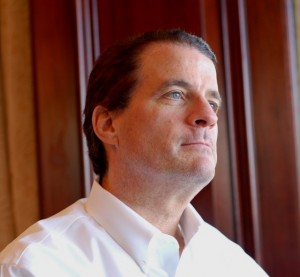 It’s an age-old adage in the investment world: Buy low and sell high. Everyone rolls their eyes when they hear it — as if it were that easy.
It’s an age-old adage in the investment world: Buy low and sell high. Everyone rolls their eyes when they hear it — as if it were that easy.
The latest Forbes 400 has been published, listing America’s top 400 richest people. It was no surprise that the sub-headline was “Almost all of America’s richest citizens are poorer this year.” As stock markets the world over tumbled, the devastation to net worth was felt not only by the richest, but by almost everyone. Everyone, that is, except Andy Beal.
“The biggest gainer is banker Andrew Beal, who tripled his net worth to $4.5 billion buying up cheap loans and assets as the markets crumbled last fall.”
Meanwhile, one of America’s most popular investors, Warren Buffett, saw his fortunes dwindle by $10 billion. Buffett is known for his value-minded investing, but confessed that he overpaid for at least one large position that came back to haunt him.
At work, I wrote about the two investors and their divergent fates. I opened the article with Beal’s heads-up match against Ted Forrest at the Wynn back in February 2006. That was the second time I met Andy Beal. But the real clues to Beal’s investing abilities were revealed at our first meeting. But before I share that poker-related story, I guess you should know just how driven I was to meet Beal to begin with.
I had heard about Beal’s big games against “the corporation” and wanted to learn more. At the time, there was very little about them on the web. But in the course of my research, I learned a bit about Beal.
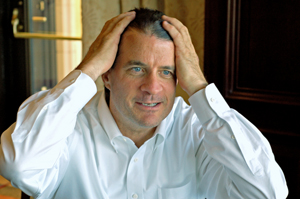 Anybody that knows me knows I never overpay for anything. I can’t think of the last time I paid retail. But I couldn’t hold a candle to Beal’s bargain-hunting ways. He started building his fortune by buying undervalued real estate while he was still in his teens. He amassed a fortune for his bank by buying up troubled assets during the S&L crisis — beating out any deals I could find on a clearance rack.
Anybody that knows me knows I never overpay for anything. I can’t think of the last time I paid retail. But I couldn’t hold a candle to Beal’s bargain-hunting ways. He started building his fortune by buying undervalued real estate while he was still in his teens. He amassed a fortune for his bank by buying up troubled assets during the S&L crisis — beating out any deals I could find on a clearance rack.
And although he never completed college, Beal has an acute mathematical mind. Math was probably my first love — nurtured through college and my years as an engineer. Even though my graduate degree was in Public Policy, my work focused on employing different statistical modeling techniques to better understand changes in international wages. I recently ran a regression analysis to understand the relationship between the constant $10,000 buy-in for the WSOP Main Event (factoring in inflation) and the increased number of players in the field (I promise I’ll share that sometime soon).
But even here, Beal had me beat. He models everything — from limit hold’em to a myriad of loan portfolio attributes. If you have some spare time, you might try increasing your bankroll by $100,000 by proving (or disproving) Beal’s Conjecture, a mathematical offshoot of Fermat’s Last Theorem. The best I can offer is $5 to the person who discovers where my pens keep disappearing to — and whether or not they’re hiding out with my missing socks.
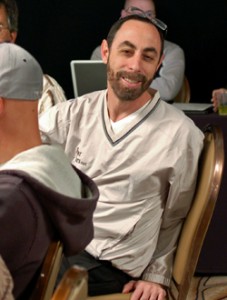 I was more driven than ever to learn about his games against the world’s best poker players. I decided to start cold calling (or cold emailing) the participants and finally made contact with Barry Greenstein. At the time, Barry was pretty busy finishing up Ace on the River: An Advanced Poker Guide
I was more driven than ever to learn about his games against the world’s best poker players. I decided to start cold calling (or cold emailing) the participants and finally made contact with Barry Greenstein. At the time, Barry was pretty busy finishing up Ace on the River: An Advanced Poker Guide (a book every aspiring poker player should read) but he was able to give me the contact information for a guy that was writing a book about the Beal games. That’s how I first met Michael Craig and learned about the fascinating book he was about to publish, The Professor, the Banker, and the Suicide King: Inside the Richest Poker Game of All Time
.
In October 2005, Michael arranged for me to play a friendly game of poker with Beal. As much as I wanted to meet Beal, the last thing I wanted to do was to go up against him in limit hold’em. But Michael explained that the game would be pot limit Omaha, a game Beal had never played. Everyone knows I’m an Omaholic. How could I resist?
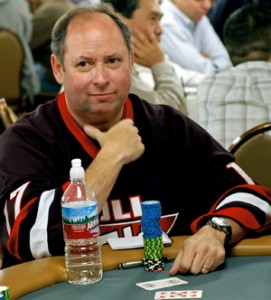 Beal wasn’t going to be my only problem. As we all know, Michael Craig is no slouch at the table. Beal Bank’s VP, Craig Singer, is also a ridiculously good player. Two pros were also going to join in the game — one with an Omaha WSOP track record a mile long.
Beal wasn’t going to be my only problem. As we all know, Michael Craig is no slouch at the table. Beal Bank’s VP, Craig Singer, is also a ridiculously good player. Two pros were also going to join in the game — one with an Omaha WSOP track record a mile long.
Michael and I arrived at the game early. It was only then I discovered that I was there to give Beal a quick tutorial on pot limit Omaha. In twenty minutes, I covered the basics and we played a couple of practice hands. That was the extent of his lesson. And then the pros rolled in.
Hold’em and Omaha are similarly structured games. A lot of hold’em players wrongly assume, therefore, that the transition to Omaha is an easy one. It is not. With four starting cards, instead of hold’em’s two, winning hand values in Omaha are vastly different. Two pair in hold’em is generally a lock. Two pair in Omaha is a disaster, and a bottom set isn’t much better. Hold’em is typically a game of made hands. Omaha is a game of outs, which change radically with each community card round.
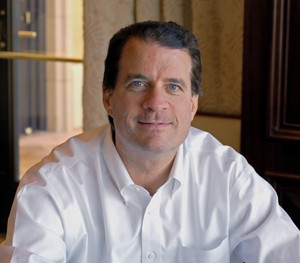 It was an aggressive game from the start, and pre-flop re-raises were the norm. It was also probably the most fun I’ve ever had at a poker table. The company was great, the stories were amazing, and the play was unbelievable. It was like kitchen table poker on steroids — or like the bloggers’ mixed game at the MGM. Although here, I had to play even more conservatively than usual, reflecting my relatively meager writer’s bankroll. After eight hours or so of poker, I had doubled my “scared money.” I was hardly the big winner.
It was an aggressive game from the start, and pre-flop re-raises were the norm. It was also probably the most fun I’ve ever had at a poker table. The company was great, the stories were amazing, and the play was unbelievable. It was like kitchen table poker on steroids — or like the bloggers’ mixed game at the MGM. Although here, I had to play even more conservatively than usual, reflecting my relatively meager writer’s bankroll. After eight hours or so of poker, I had doubled my “scared money.” I was hardly the big winner.
Beal cleaned up against the pros — in a game he had never played before — in a game that requires a major adjustment and a constant reassessment of value.
Warren Buffett is a phenomenal investor, but in the spring and summer of 2008, he made a rare misstep. As oil prices soared, hitting new highs by the day, Buffett added roughly 66.5 million shares of ConocoPhillips. Admittedly, the company was of better value than most of the other oil companies at that point. But the game had changed. It was like the difference between hold’em and Omaha. Commodities and commodity-related companies were being fueled by speculation. And Buffett’s “two pair” value play was never going to hold up — and didn’t.
Beal knew the game had changed and was folding “two pair” going into the summer of 2008. Regulators and credit agencies criticized him for not buying into the mortgaged-backed securities game — where other banks were apparently playing any four cards. When the market collapsed, Beal swooped in and scooped the pot with the kind of pot odds that make your mouth water.
They call Warren Buffett the “Oracle of Omaha,” but his ConocoPhillips play was pure Texas hold’em. They say you can tell a lot about a man by the way he plays cards. I think you can tell more about an investor by the way he plays Omaha.
Kudos to Jason Kirk for first breaking the Beal/Forbes story in the poker media — with a slightly different spin:)
Pictures of Beal taken by me at the Wynn in 2006 (Commercial sites, don’t steal ’em without askin’). My picture of Michael Craig was taken at the 2006 WSOP, and my picture of Barry Greenstein is from the 2007 WSOP.
5 Comments